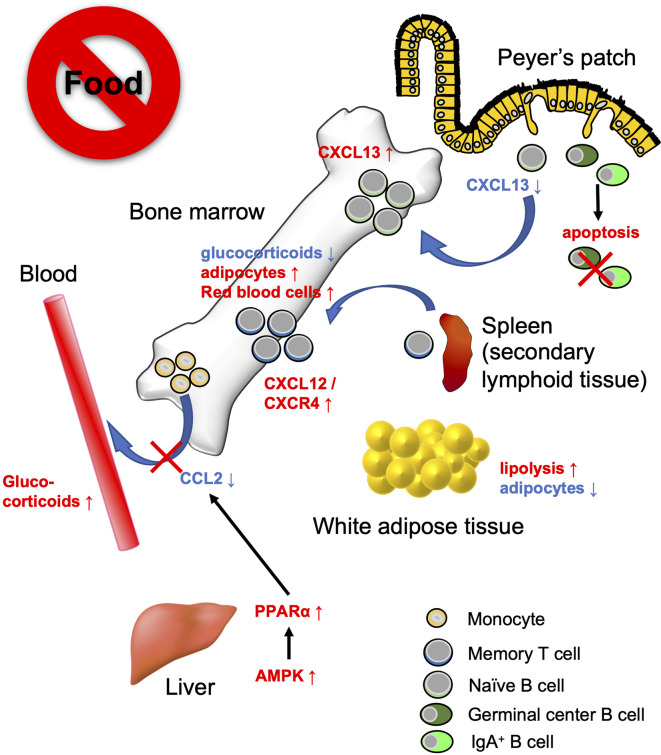Figure 3.
Bone marrow serves as a reservoir for several immune cell subsets in response to calorie restriction (CR) or fasting. Under low-energy conditions, naïve B cells, monocytes, and memory CD8+ T cells accumulate in the bone marrow. Fasting lowers CXCL13 levels in PPs and reciprocally increases the expression in the bone marrow. This leads to the migration of naïve B cells from PPs to the bone marrow. On the other hand, GC B cells and IgA+ B cells undergo apoptosis. Fasting diminishes circulating CCL2 levels through AMPK/PPARα signaling activation. Consequently, the egress of monocytes from the bone marrow is suppressed. Dietary restriction drives CD8+ memory T cells to traffic toward the bone marrow in the S1P/S1PR1- and CXCL12/CXCR4-dependent manner. The bone marrow microenvironment provides a tissue-specific niche for the maintenance of memory CD8+ T cells with low glucocorticoid concentration and abundant adipocytes.

